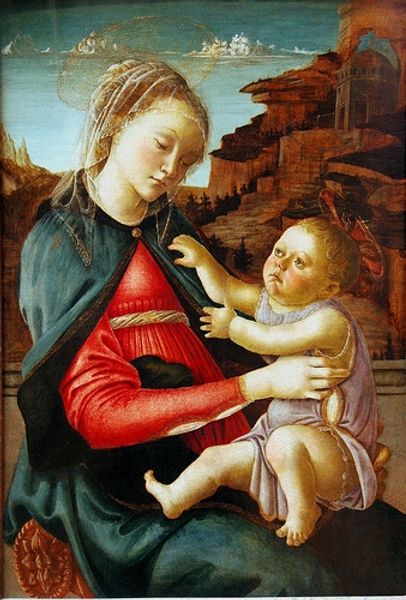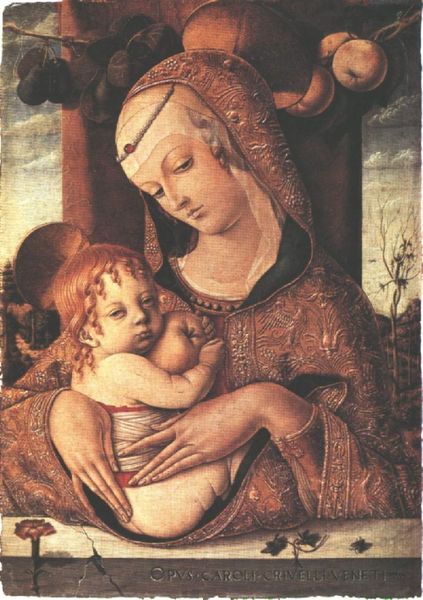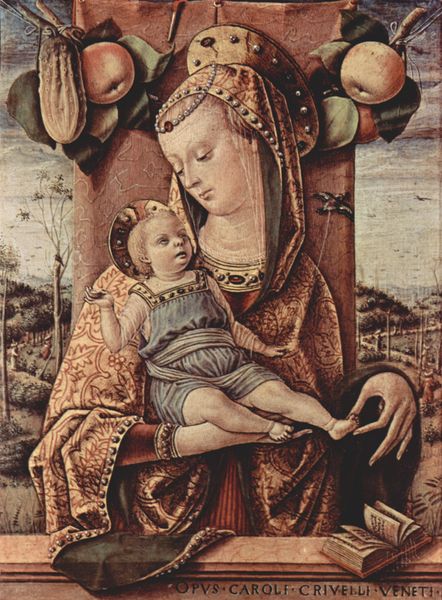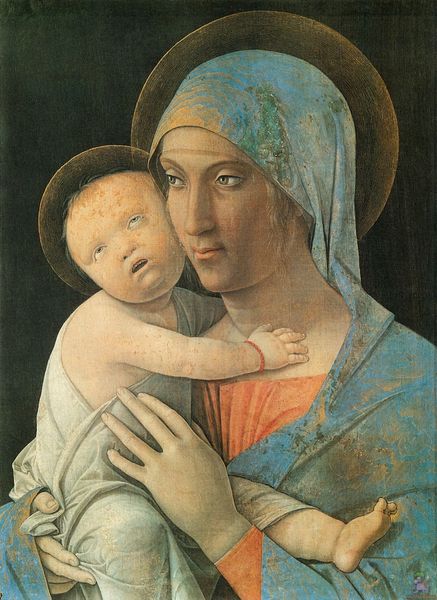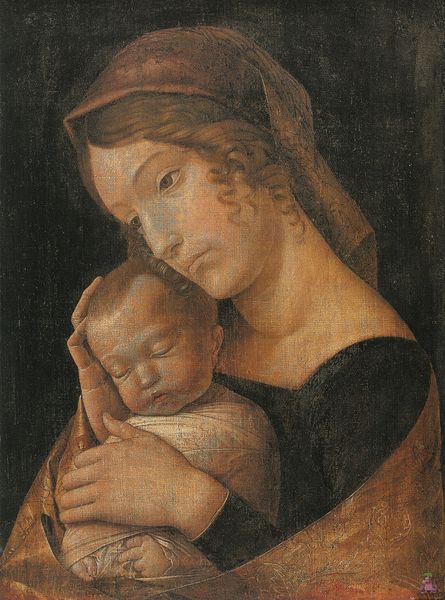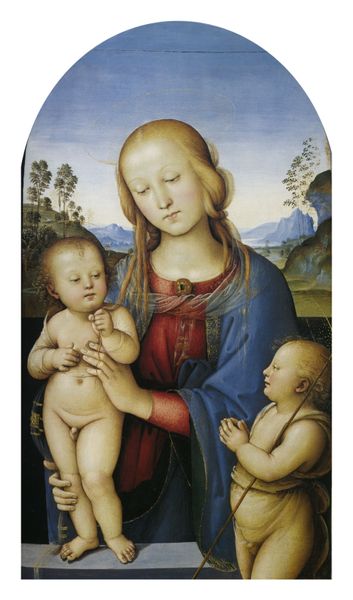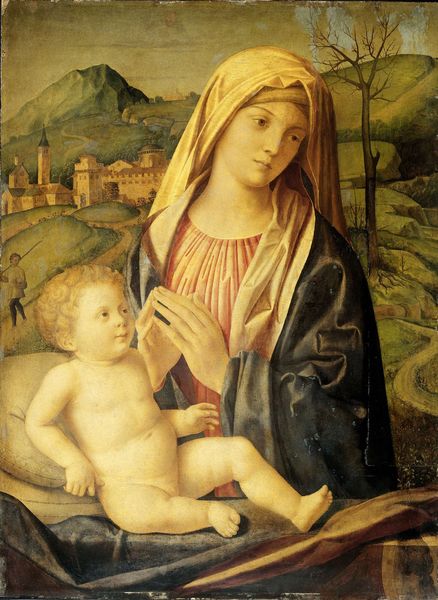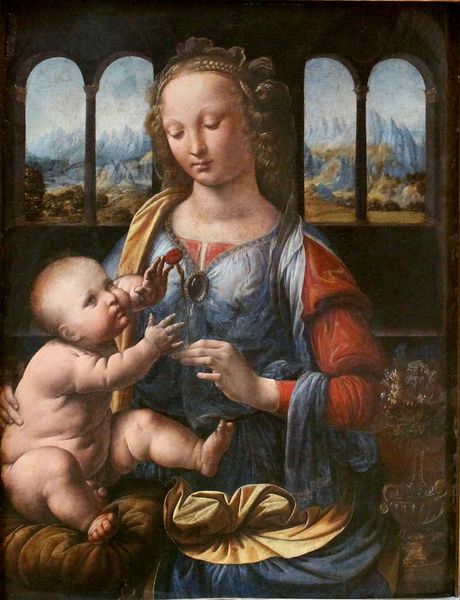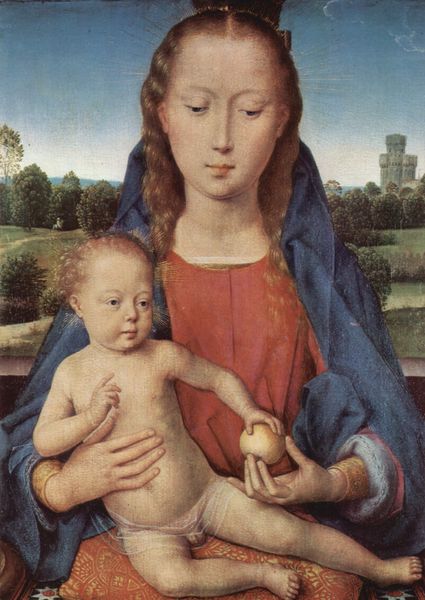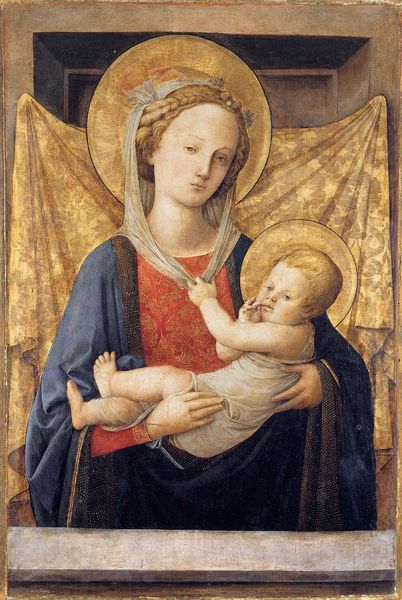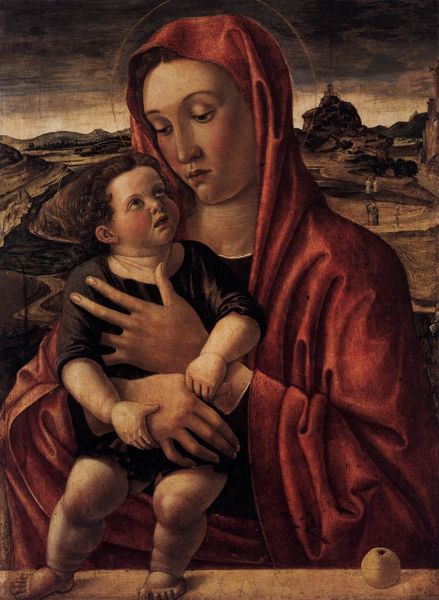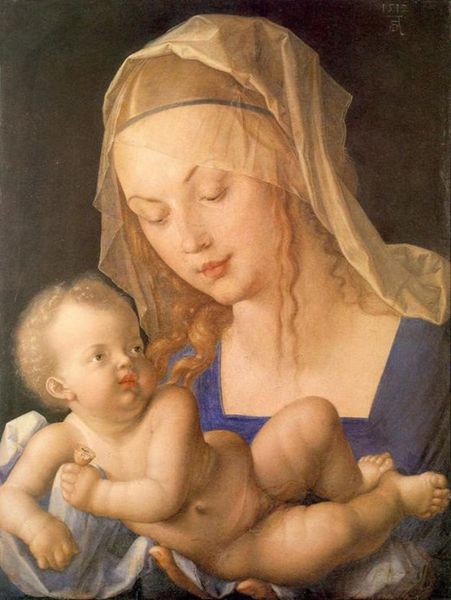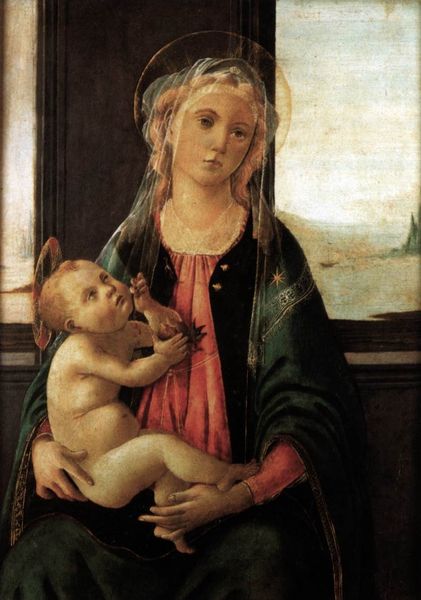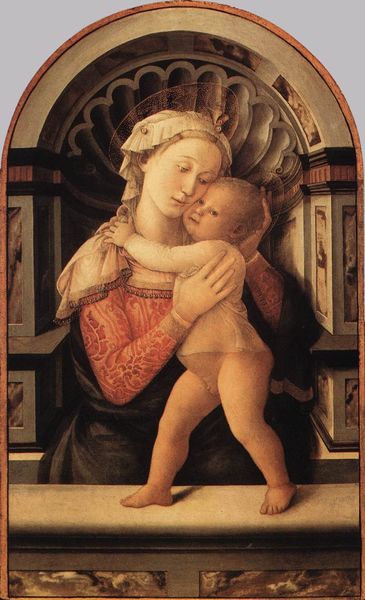
tempera, painting, oil-paint
#
portrait
#
narrative-art
#
tempera
#
painting
#
oil-paint
#
figuration
#
madonna
#
oil painting
#
child
#
group-portraits
#
christianity
#
italian-renaissance
#
early-renaissance
#
portrait art
#
virgin-mary
#
watercolor
#
angel
Dimensions: 76 x 54 cm
Copyright: Public domain
Filippo Lippi’s “Madonna and Child” was painted using tempera on a wooden panel, a common method for the time. Lippi would have ground mineral pigments by hand, mixing them with egg yolk to create his paint. The smooth finish we see is a testament to the careful layering and blending achieved with meticulous brushwork. Wood panel paintings such as this would have been commissioned by wealthy patrons. There is a very important contrast between the costliness of the materials and the labor invested by the artist. The gold in the halos signifies the holy figures, but also the wealth of the patron who likely bought them. When considering a piece like this, it’s crucial to think beyond just the image. It's about the social and economic forces at play in its creation, the skilled labor involved, and the symbolic value of the materials themselves. Only then can we truly appreciate the layers of meaning embedded in this work.
Comments
No comments
Be the first to comment and join the conversation on the ultimate creative platform.
